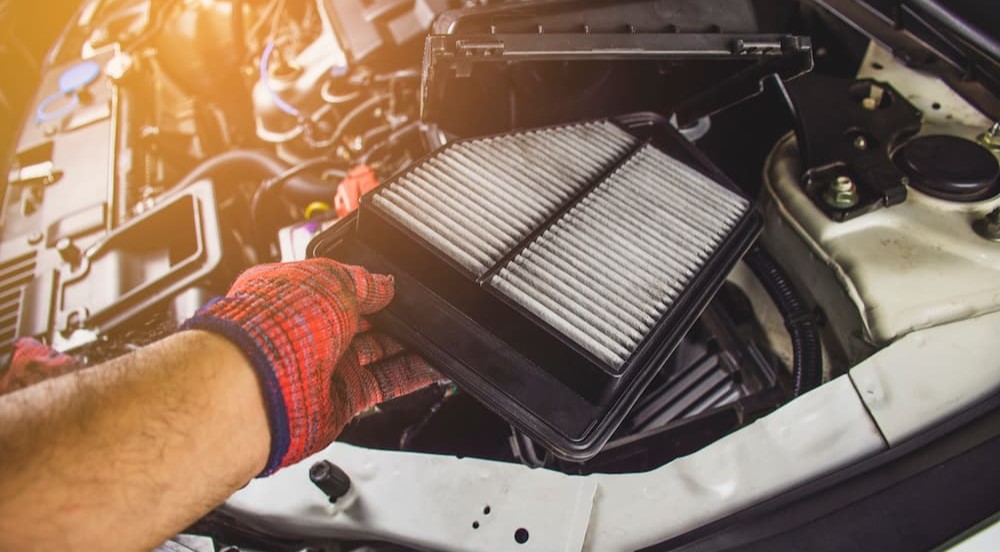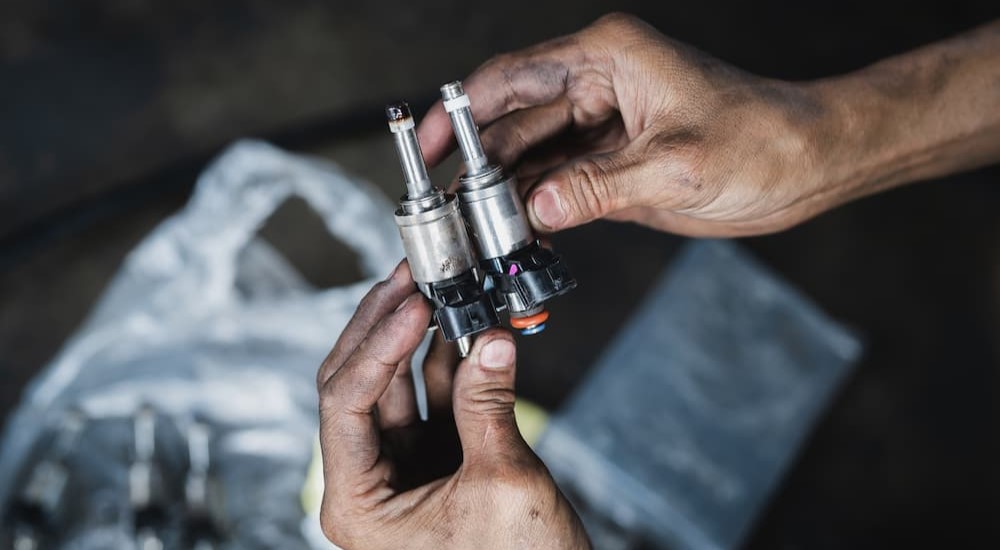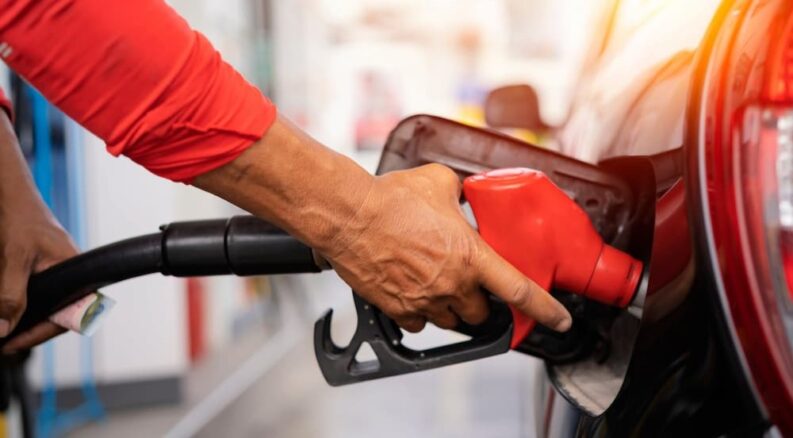While horsepower and torque are certainly important, fuel efficiency tends to be the most critical metric for the average driver. Having plenty of power is always nice, but on a day-to-day basis, your vehicle’s fuel economy will be a far more relevant statistic. If you’re shopping for a new or pre-owned vehicle, fuel economy can be the make-or-break factor when it comes to deciding between two comparable models, but fuel economy isn’t static. The EPA-estimated number on the sticker might be the reason you choose Model A over Model B, but fuel economy can easily be affected by several factors, including driving habits, temperature, underinflated tires, and even age. As a car, truck, or SUV starts to get on in years, it’s bound to see that MPG figure drop, but why does fuel efficiency change as your vehicle ages? Read on as we dive into this common automotive question and look at a few ways to keep your fuel efficiency in a respectable range, no matter the age of your vehicle.
7 Causes of Poor Fuel Economy
There’s no doubt that vehicles become less fuel efficient over time, but how much of a hit do they really take? Estimates vary, but one study by the University of Michigan found that vehicles on the road for at least a decade consume as much as 35 percent more fuel than their late-model counterparts. That’s probably on the high end and is probably at least partially related to advancements in automotive technology that have seen today’s vehicles become increasingly efficient. However, it’s still a troubling statistic, to say the least. So what’s to blame for the steady loss of efficiency?
In many cases, it comes down to damaged, worn-out, or improperly maintained systems and components throughout the vehicle. The EPA estimates that managed engines and compromised exhaust systems can account for as much as a 40 percent loss in efficiency, which is why it’s always important to promptly tackle repairs and stick to your vehicle’s recommended maintenance schedule. Let’s take a closer look at some of the prime suspects when it comes to decreased fuel economy.

Air Filter
Today’s gas-powered vehicles rely on a precise mix of air and fuel to work their magic. If the source of this air or fuel is clogged, congested, or otherwise compromised, it can lead to a noticeable decrease in fuel efficiency. Your vehicle’s air filter is responsible for catching any dirt, debris, or other particulates before they can make their way into your engine. Still, it’s bound to get a little clogged up over time. When this happens, the air/fuel mixture gets thrown out of whack, forcing your engine to burn more gas to make up the difference. To be clear, we’re talking about the engine air filter, not the cabin air filter responsible for catching particulates before they can make it into your vehicle’s heating and air conditioning system. An engine air filter is typically rated to last between 15,000 and 30,000 miles, so keep on top of that schedule if you’re trying to maximize efficiency.
Engine Oil
Just like people, a vehicle’s needs change as they start to age. A spry, fresh-off-the-lot model can usually take whatever you throw at it, but an aging vehicle often needs a little more TLC. One of the most common solutions is switching to a specially formulated high-mileage engine oil, but this does come with some downsides in fuel efficiency. High-mileage engine oils are designed with additives to condition and maintain the internal seals and gaskets found throughout the engine. Over time, these seals can become cracked, brittle, and worn, causing oil to seep through the cracks and not get to where it’s needed within the engine. High-mileage engine oil does a great job of reducing seepage, but it’s also thicker than your average oil. This thickness—or “high viscosity” in mechanic-speak—does a great job of lubing up sensitive engine components but also creates more resistance and, thus, takes a toll on overall efficiency. Using a thicker, high-mileage oil will certainly help to keep the oil where it’s needed, but it’s important to be aware of the impact on fuel economy.

Clogged Fuel Injectors
From brake pads and rotors to tires, air filters, and belts, many common vehicle components are subjected to regular inspection and replacement over a vehicle’s life. Hidden under the hood, a vehicle’s fuel injectors often escape notice when it is time for replacement. Today’s fuel injectors typically last around 80,000 to 100,000 miles—or roughly 1 billion combustion cycles—but when they start to go bad, you could find yourself back at the gas pump a little more often than you might like. Again, it all comes down to the air/fuel mixture. Fuel injectors are designed to spray fuel into the engine cylinders in an exact pattern. As these injectors become clogged over time, this pattern falters, reducing fuel efficiency and increasing consumption. The parts can also become damaged, which can cause its own set of problems when it comes to the fuel injection process. If you need to replace the fuel injectors, expect to pay between $300 and $900 or up to $2,000 on vehicles with more cylinders. If the problem can’t be traced to one broken fuel injector, experts advise replacing all the fuel injectors simultaneously.
Oxygen Sensor
Mounted onto the exhaust pipe near the catalytic converter, an oxygen sensor measures a vehicle’s exhaust gasses as it exits the vehicle. Oxygen sensors can detect if a vehicle is running “rich” (indicating too much fuel in the fuel-to-air ratio) or “lean” (too much air), then use this information to dictate how much fuel is fed into the engine. Given their location just south of the catalytic converter, oxygen sensors are prone to getting a little dirty over time, which can lead to some real issues when it comes to accuracy. A dirty oxygen sensor can incorrectly read the exhaust as running too lean, causing it to squirt more fuel into the engine and reducing overall fuel economy— as much as 40 percent in some cases. A malfunctioning oxygen sensor will often pop up as a check engine light, but don’t fret; they’re relatively cheap to replace at an average of $150 to $300 and should last another 100,000 miles.
Mass Airflow Sensor
Think of the mass airflow sensor as the counterpart to the oxygen sensor. Instead of measuring how relatively rich or lean the exhaust as it leaves the vehicle, the mass airflow sensor measures the amount of air that’s being fed into the system at the start. This figure is used to calculate the fuel-to-air ratio, which can lead to obvious problems if the reading is inaccurate. This can lead to poor fuel efficiency or even a stalled engine, as the system can’t balance the fuel-to-air ratio well enough to start the combustion process. Luckily, mass airflow sensors rarely break, so addressing this issue is usually just a matter of a quick cleaning using a can of mass airflow sensor cleaner.
Fuel Filter
A fuel filter is responsible for giving the gas one final cleaning before it enters the engine, but things can go a little awry when it gets clogged or damaged. When the fuel filter isn’t working at its best, the entire fueling system can experience low pressure, leading to poor engine performance. Once upon a time, that meant drivers were forced to replace their fuel filter every 30,000 miles, but that’s often no longer the case. Most of today’s new vehicles are designed with a new-and-improved fuel filter within the gas tank itself. Designed to last as long as 150,000 to 200,000 miles, it might not need replacement during a vehicle’s entire service life, which is a good thing due to the labor involved in reaching it. Suppose you have an older vehicle and suffer from low fuel efficiency. In most cases, the filter might be to blame, but when it comes to most newer vehicles, it’s a less common occurrence.

Piston Rings
When combustion occurs inside the typical gas-powered engine, the explosion causes the pistons to be driven down into the cylinders, turning the crankshaft that feeds power to the gearbox and ultimately out through the wheels. In order to maximize the force of this explosion, pistons are outfitted with rings that create a tight seal between the cylinder wall and the piston itself. Over time, these piston rings can become worn out, reducing compression and leading to a less efficient engine. Engine oil goes a long way toward keeping these piston rings lubricated and in good working order, yet another reason to not skip your regularly scheduled oil change. Piston rings should last some 100,000 to 150,000 miles, but if you notice reduced fuel economy or are burning through oil at an accelerated rate, worn piston rings could be to blame.
From the oxygen and mass airflow sensors to the air and oil filters, fuel injectors, and more, plenty of components can impact fuel economy. While many of these parts should last for the vehicle’s life, others are a little more disposable, so sticking to your vehicle’s recommended maintenance schedule is a good idea. Commonly found in the owner’s manual, these handy tables give you a roadmap to ongoing automotive success by listing every maintenance and when it should be performed. Most drivers know that an oil and oil filter change should be performed every 3,000 to 5,000 miles, but few know the guidelines when it comes to more esoteric parts. Keeping an aging vehicle on the road is often more of an art than a science. Every car, truck, and SUV is different, and no matter how hard you try, a vehicle will always take a hit to its fuel economy as it ages. Still, with a little attention to detail, some elbow grease, and the owner’s manual by your side, it’s easy to limit the worst damage.

